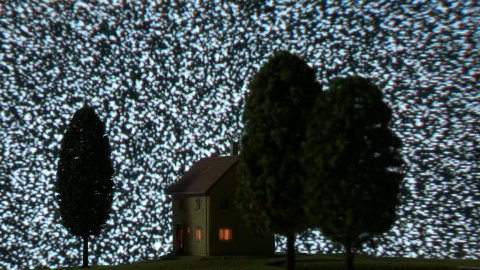
Tara Judah
on Thu 28 July 2016Rediscovering form as content: Experiments in Aesthetics
Posted on Thu 28 July 2016
Rediscovering cinema is not only about unearthing filmic gems from the past, it’s also about advances in the conversation about and practices of cinema now.
Considering the premise of this weekend is about re-disovering cinema, it may seem strange that I've selected five fairly recent films for our experimental session. But, rediscovering cinema is not only about unearthing filmic gems from the past, it’s also about advances in the conversation about and practices of cinema now.
How those contemporary practices engage with the history, context, discipline and movements that came before is crucial to understanding their aesthetic. Photochemical film is rarely valued contemporarily outside of hand processed labs, small community collectives and the experimental fringes. Sure, there are still one or two heavyweights championing the format - Quentin Tarantino and Christopher Nolan spring quickly and easily to mind, but for the most part, mainstream production, distribution and exhibition just isn't interested.
So when we think about the experimental fringes of filmmaking, we tend to think a lot about materiality. Again, the films in this session will be a little surprising; just one is screening on 16mm film print format. But each film in this session, whether produced and screening on photochemical film or built and screening from digital technologies, explores or is founded upon the relationship of materiality to aesthetic.
Form is content.
But contemporary practice isn't just about offering up form, it also gives us the opportunity to re-discover the entire concept of cinema anew; aesthetic is constantly reworking, shifting and challenging what we might think of as cinematic parameters. And while some of the films may hark back to the structuralist days they are also free of it. Experimental films ask us to forget premise, remove expectation and allow aesthetics to guide the mainstream idea of comprehension we call 'meaning'.
The first film we’ll look at is a 16mm film print of a film that involved no filming. Richard Tuohy's Flyscreen (2010) uses the photogram or 'rayograph' method made famous by Man Ray in the 1930s to achieve a very visceral strobing 'flyscreen' effect. The second film selected is a computational display that works with archive material, the 1937 Shanghai version of Phantom of the Opera, Song at Midnight (Ma-Xu Weibang) that also produces a strobing aesthetic, only in this instance it is pixelated.
The final three films, all courtesy of the LiMA Archive (Netherlands); and the image gazes back (Belit Sag, 2014), Establishing Eden (Margit Lukas and Persijn Broersen, 2016) and Voor Film (Douwe Dijkstra, 2015) explore what we might think of as the surface of the screen. Impressively, and distinctively, they each offer a different view of 'giving way'; a shifting perspective and an interruption of screen stability.
All five films rediscover as they experiment; technically, theoretically, aesthetically and with great affect.
Experiments in Aesthetics screens Saturday July 30th at 4pm as part of Cinema Rediscovered.

